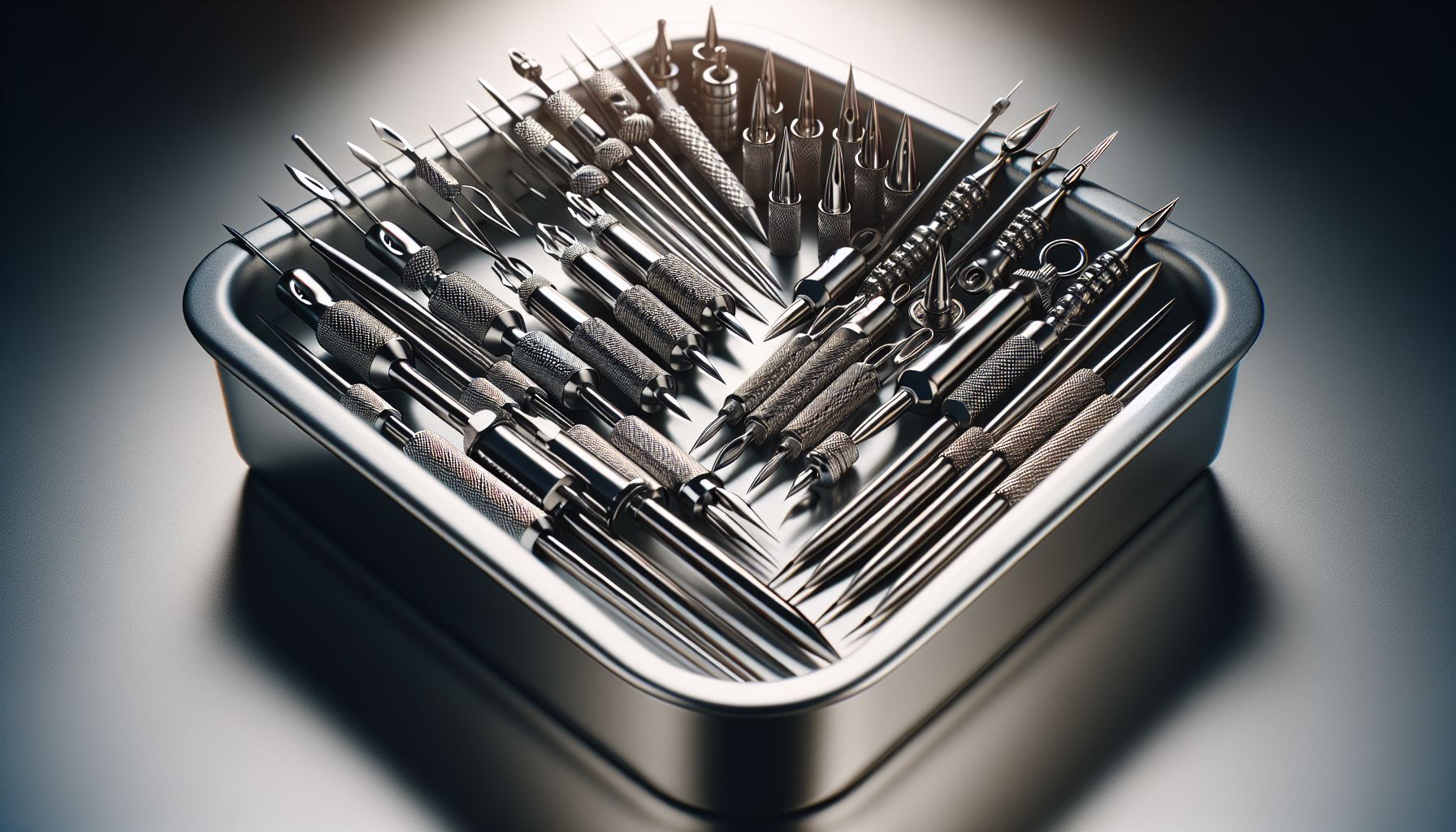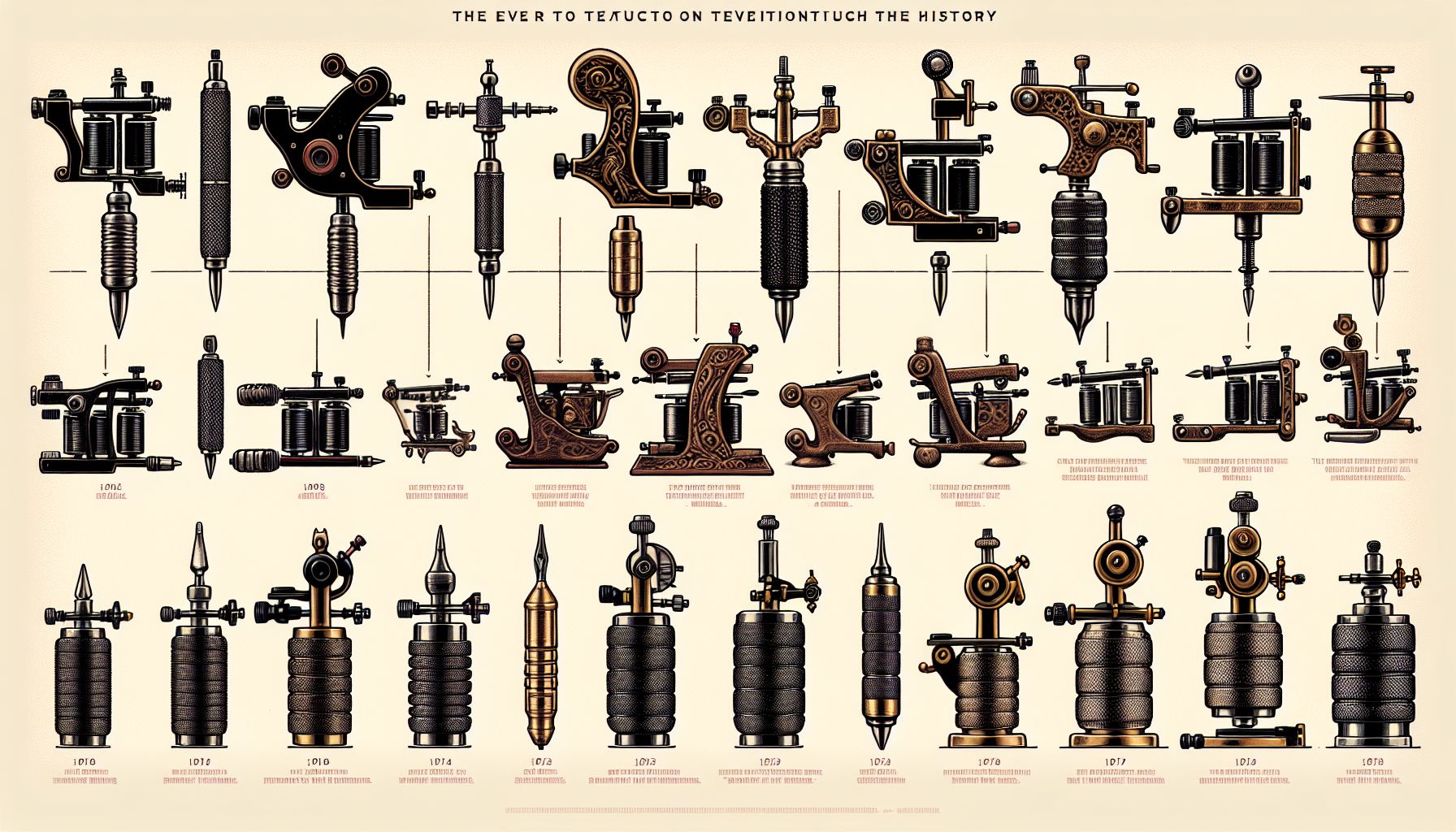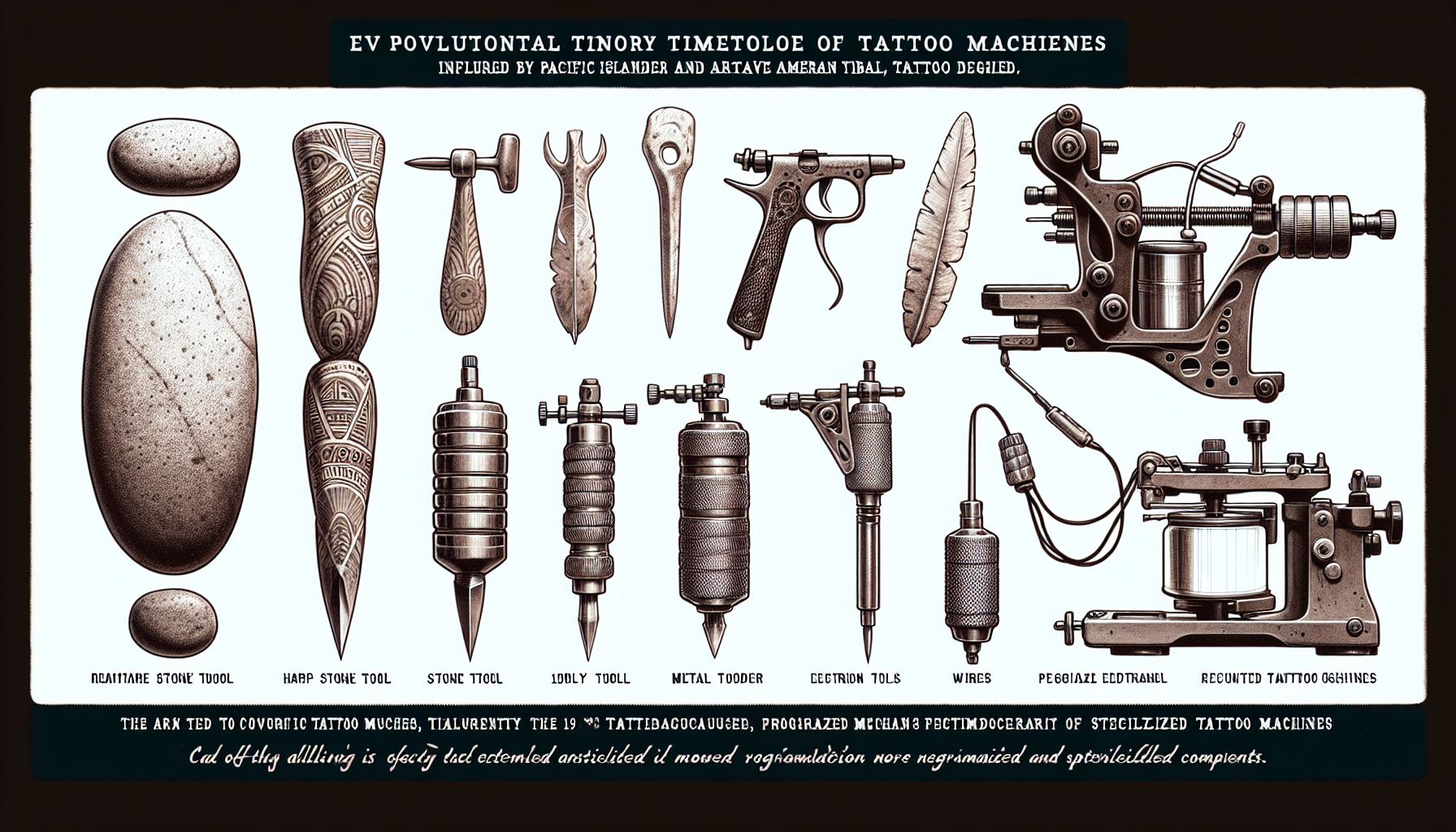Tattooing: an ancient art form that has undergone a transformation into a global phenomenon, now synonymous with self-expression and cultural identity. I’ve spent years guiding needles through skin, watching tattoos transform lives and bodies alike. And crucial to every vibrant color and crisp line is a tool that has evolved dramatically since its conception—the tattoo machine. In this article, we’ll delve into the beating heart of tattoo supplies: tattoo machines. Still, we’ll explore not just any machines, but the metamorphosis they have undergone to reach the modern marvels they are today.
When I first wrapped my fingers around a tattoo machine, it was a well-used coil machine, buzzing like an angry bee. It was a device that demanded respect—finicky, heavy, but incredibly rewarding in skilled hands. Throughout the years, I’ve watched—and participated in—the gradual shift from these traditional coil models to the sleek, efficient rotary machines that dominate the industry now.
Coil machines have been the backbone of tattooing for decades. They’re known for their humming presence in tattoo shops worldwide—powered by electromagnetic coils that drive the needle up and down. Adjusting the machine’s speed and power meant tweaking the contact screw, an almost meditative ritual for seasoned artists. I fondly recall the satisfaction of achieving the perfect tune, creating shades and lines that seemed almost to whisper onto the skin.
For beginners and pros alike, the nuanced control that coil machines offer can be a double-edged sword—they require a level of maintenance and adjustment that can be as much an art as tattooing itself. Subtle changes in voltage or the gap between contact points could mean the difference between a masterpiece and mediocrity. But for all their charm and power, coil machines have drawbacks, such as their weight, noise, and vibration, which can be taxing over long sessions.
Enter the rotary tattoo machine. The first time I worked with one, the difference was night and day—the gentle whir instead of a buzz, the lightness in my hand, and the consistency of the needle movement. Rotary machines, powered by a small motor that rotates to move the needle, have transformed how tattoos are created. They’re versatile, easier to handle, and have greatly reduced vibration, which means less fatigue and more precise art.
One thing I value most about rotary machines is their adaptability to different styles and techniques. While coil machines offer a tactile sense for shading and lining that many veterans swear by, the rotary’s smooth operations make them ideal for a wide range of work, including color packing and soft shading. With the right adjustments, a single rotary machine can do the work of several coil machines, making them a smart investment for any artist.
We can’t discuss modern tattoo machines without noting the rise of wireless pen-style rotaries. These devices have liberated artists from the confines of cables and power supplies, offering unprecedented freedom of movement. With their ergonomic design mimicking a traditional pen or marker, these machines have made tattooing more intuitive than ever, especially for artists who come from a drawing or painting background.
Despite the clear advantages of rotary machines, the choice between them and coil machines often comes down to personal preference. Some veteran artists I know remain loyal to the coil, insisting that the weight and vibration are essential to their technique. Others excel with the lightness and smooth operation of rotary machines, praising the ease with which they can work for hours without strain.
The debate between rotaries and coils is akin to that of analog and digital in music—the former boasting a ‘soul’ that die-hards feel rotaries can lack. But what matters most, we’ve come to realize, is the artist’s comfort with their tool of choice. The best tattoos come from a synergy between artist, machine, and canvas (that’s the skin, in case you were wondering).
The technological advancements in tattoo machines have also played a pivotal role in the explosion of artistic talent in the industry. Nowadays, artists can push boundaries like never before, executing designs that would have been unthinkable in the past. The precision and control that modern machines offer mean that the only limit is the artist’s imagination.
In conclusion, the evolution of tattoo machines is a part of the larger narrative of tattoo supplies and the industry at large. From the buzzing, heavyweight champions of tradition to the nimble, near-silent modern wonders, tattoo machines have come a long way. Whether you’re an up-and-coming artist deciding on your first machine or a seasoned pro considering an upgrade, it’s important to weigh the pros and cons of each type and choose the one that feels right in your hand, that transforms your vision into reality. Remember, it’s not just about what’s new and shiny; it’s about what brings the art in your heart to the surface for the world to see.
As you continue to navigate the ocean of tattoo supplies, take the time to appreciate the ingenuity and engineering behind each piece of equipment. For every machine, ink, or accessory you use, there’s a history of artists and innovators who have left their mark on our craft. And as we look to the future, one can only imagine how these tools will evolve further to elevate the art of tattooing to even greater heights.



